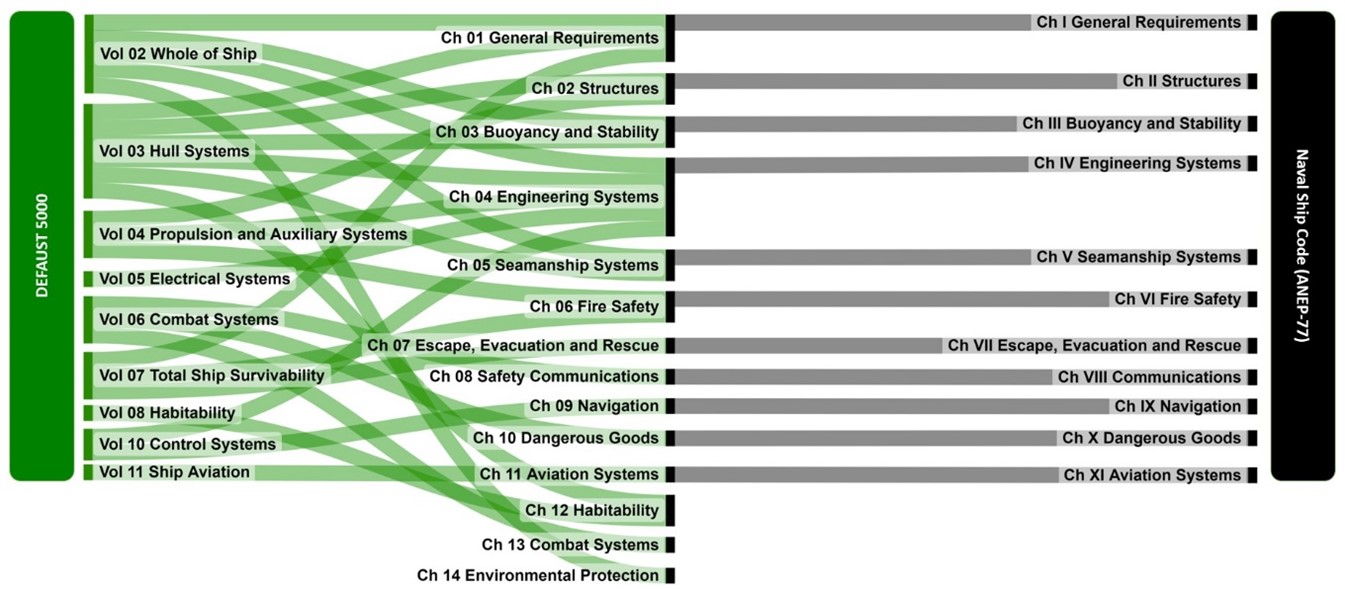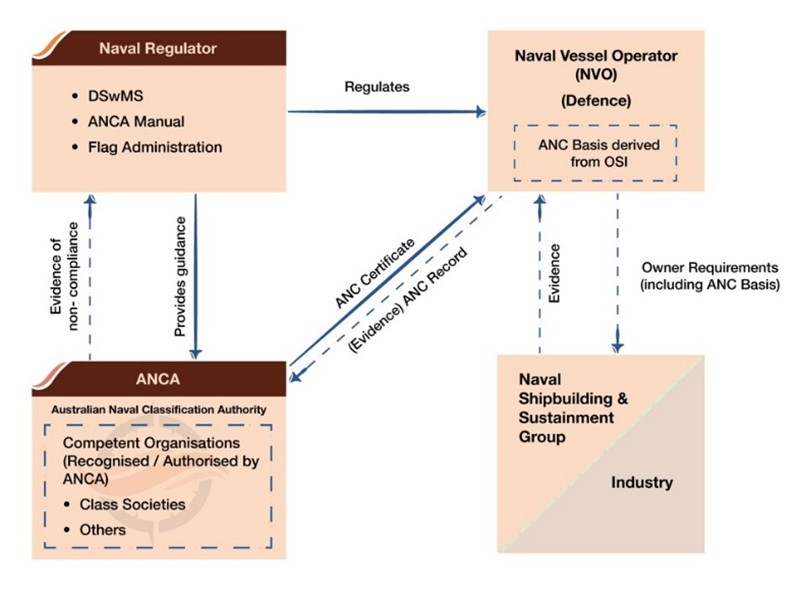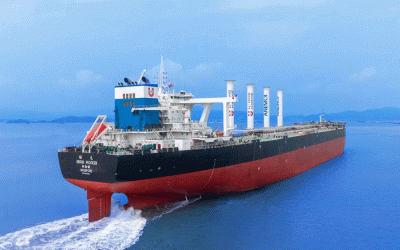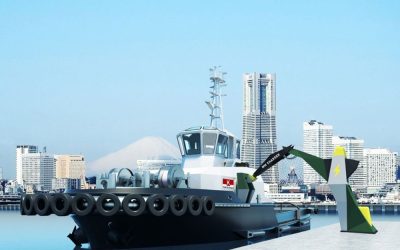Technical Presentation 6 September 2023: Australian Naval Classification
Mr Colin Dagg CSC, Assistant Secretary, Australian Naval Classification Authority, gave a presentation on Australian Naval Classification to a joint meeting of the NSW Section and IMarEST ACT & NSW Branch in the Henry Carmichael Theatre, Sydney Mechanics School of Arts in the Sydney CBD, with the Secretary of the IMarEST, Geoffrey Fawcett, as MC and streamed live on 6 September. The presentation was attended by 23 with an additional 31 online.
Introduction
Mr Dagg began his presentation by saying that Defence has three strategic priorities: to shape Australia’s strategic environment, to deter action against Australia’s interests, and to respond with credible military force when required. Australia’s maritime capability is critical to the nation’s future and, realising this, the Australian Government has laid the foundation for one of the largest recapitalisations of the Australian maritime domain in modern history, which is underpinned by a continuous naval shipbuilding enterprise. This has been reinforced through the release of the Defence Strategic Review (DSR), which reiterates the Government’s commitment to optimising our vessels, and their ability to respond to operational tasking.
Australian Naval Classification
Australian Naval Classification supports sovereign shipbuilding. Government has established an enduring sovereign shipbuilding program, and Defence has a significant role to play within this new ecosystem. One important role is the specification of materiel seaworthiness requirements against which naval vessels are designed, constructed, certified and maintained. Implementation of an Australian Naval Classification (ANC) Framework delivers against this important role, which also aligns with the Government’s priorities reiterated in the DSR.
One of the core components of the ANC Framework is flexibility, which allows it to adapt in line with evolving Defence strategy for maritime capabilities, enabling it to be applied to capabilities bought off-the-shelf and those designed and built in Australia.
Naval Design Rules
Defence needs contemporary and outcome-based naval design rules and standards which are:
- Aligned to Australian WHS and environmental legislation, and the Defence Seaworthiness Outcome (i.e. balancing safety, environmental protection, and the operational effect).
- Founded on international conventions—specifically, the NATO Naval Ship Code and Naval Boat Code—adopted and adapted for Australian requirements.
- Empowered through a robust framework, which is applied throughout the life of the vessel, including the design, construction, maintenance, and disposal phases.
Driving Principles
The ANC Framework embodies two driving principles, which enhance the technical interoperability with coalition and partner forces while optimising industry support for Australia’s sovereign shipbuilding capability., These are:
- As international as possible and as Australian as necessary—leveraging best practice in terms of design standards and capability worldwide, whilst ensuring compliance with Australian requirements and legislation.
- As civilian as possible and as military as necessary—combining civilian classification models with Defence-specific requirements to ensure that operational outcomes can be met.
Development of the ANC Rules for Ships
The ANC Rules are founded on defensible and credible international convention for naval classification.
The Allied Naval Engineering Publication 77 (ANEP-77) is the NATO standard Naval Ship Code, which was developed by international navies and commercial classification societies as a benchmark for the design, construction and maintenance of naval vessels. ANEP-77 does not cover requirements for combat operations or extreme-threat conditions; however, these are included in the ANC Rules to address the full set of requirements against which an Australian naval vessel can be classified.

Mapping of DEFAUST 5000 onto ANEP-77
(Diagram courtesy ANCA)
ANC Framework Benefits
Implementation of the ANC Framework will deliver a number of benefits:
- flexibility of outcome-based rules and standards, which allow pragmatic solutions for materiel seaworthiness compliance;
- simplified seaworthiness assurance outcomes using common and internationally-accepted maritime practices of classification;
- strengthened alignment and cooperation between departments across Government, coalition and partner forces, and industry;
- clarity and consistency of reporting to operational commanders on the materiel seaworthiness of vessels, to enable well-informed decisions when using naval vessels; and
- reduction of costs related to materiel assurance through greater certainty and clarity for industry, and reduced administration overhead.
ANCF Operating Model
The ANC Framework is applied through an operating model which has two distinct phases: attaining and maintaining naval classification.
Attaining Naval Classification
- The ANC Rules are applied in the context of an Operating and Support Intent to develop the Australian Naval Classification (ANC) Basis for each vessel.
- The ANC Basis details the rules applicable to the vessel, the solutions to these applicable rules, and any justification for alternate solutions.
- Evidence of compliance against the ANC Basis is captured in an ANC Record.
- Evidence is gathered by competent organisations.
- Evidence is submitted to the ANC Authority for review and acceptance; the ANC Authority then issues the ANC Certificate.
- The vessel then enters the ‘Maintaining Naval Classification’ phase.
Maintaining Naval Classification
- Throughout the lifespan of a vessel, the ANC Authority will conduct oversight of continuous improvement and compliance with the ANC Basis.
- The Naval Vessel Operator (NVO) is responsible for maintaining the vessel in accordance with its ANC Basis. Non-compliances are reported to the ANC Authority and Conditions, Memorandums or Notes are issued.
- Changes to the vessel are managed by the NVO, and reported to the ANC Authority. All changes to the ANC Basis are to be approved by the ANC Authority.
- The NVO is responsible for maintaining the ANC Record (for example through continuous surveys), which will be audited by the ANC Authority and other surveillance activities.
Australian Naval Classification Authority
The ANC Authority has been established by the Defence Seaworthiness Authority (DSwA) to administer the ANC Framework, prescribe Australian Naval Classification Rules, approve an Australian Naval Classification Basis for each naval vessel, and issue Australian Naval Classification Certificates for all naval vessels operated by Defence.
The ANC Authority is both an appointed individual and the supporting organisation.
The ANC Authority works in support of the DSwA, distilling both governance, and activity- and condition-based compliance obligations, into materiel requirements. Prescribed solutions to the ANC Rules support the achievement of the seaworthiness outcome and the optimisation of acquisition, design and sustainment.

Relationship of ANCA to the Naval Regulator, the Naval Vessel Operator
and the Naval Shipbuilding and Sustainment Group
(Diagram courtesy ANCA)
ANCF Implementation
There is ongoing work to develop the ANC Framework, (inclusive of the ANC Rules), in preparation for the ANC Framework rollout including transition of existing maritime capabilities.
ANC Rules Development
Currently ANCA is working through the finalisation of the first three divisions of the ANC Rules:
- Division 1 Australian Naval Classification
- Division 2 Core Design Rules
- Division 3 Ship Rules
In the medium term, the ANCA will work on the development of:
- Division 4 Small Craft and
- Division 5 Remote and Autonomous Systems
In the long term, ANCA will develop:
- Division 6 Support and Deployable Sub Systems
- Division 7 Submarines and Submersible Craft
Proof-of-Concept Activities
Proof-of-concept activities are also underway to inform the application of the ANC Rules and the ANC Framework for both the current and future fleets.
Transition
Transition of existing vessels will occur in a phased approach commencing in Q4 2023, with the aim of minimising the impact on Defence and the defence industry.
To this end, naval vessels will be assessed against the ANC Rules and, where there are gaps in solutions to these rules, a risk assessment will be undertaken. The Capability Mangers (for example Chief of Navy, or Chief of Army) can then decide whether the risk is acceptable and can be managed, or whether the risk is unacceptable and a change to the vessel is required for the rules to be met.
Summary
There was a need for Australian Naval Classification design rules and standards. This led to the establishment of the Australian Naval Classification Authority, and the ANC Framework. This has been applied through a common operating model, and implementation across Defence will minimise the impact on defence and industry.
Questions
Question time was lengthy and robust, and raised many more interesting points.
The presentation was not recorded.
The vote of thanks was proposed, and the “thank you” bottle of wine was presented, by Steve Morant. The vote was carried with acclamation.

Colin Dagg (L) and Steve Morant (Photo Phil Helmore)




